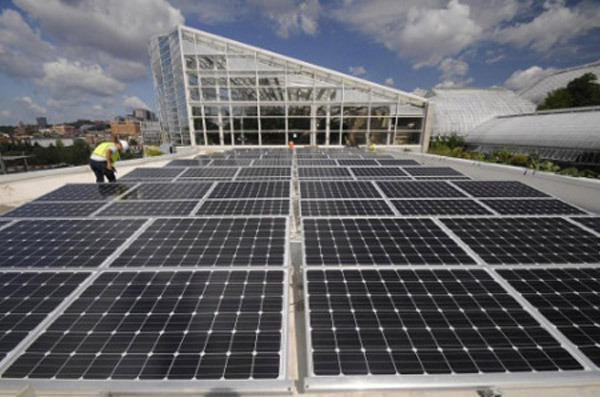The Future of Solar is Bright for Photovoltaics
Photovoltaics is a bit of a funny word, but it packs a serious implication. The lay term for photovoltaics is solar panels, and they’re becoming increasingly more common. Research online shows that solar energy has surpassed prices for fossil fuel energy, but unfortunately to see a new revolution in energy it’ll take a lot more than just the flip of a switch. However, it’s interesting to think about how PVs have gone from powering small toys to operating green-energy solar street lights, heaters, residential power, and even entire facilities. Here’s a brief look at how photovoltaics have improved over the years, from price, technology, and policy.
The Price is Right This Time
I hate to reference Bob Barker’s old show, but it seemed fitting to add when talking about how PVs have gone down in price over the course of 50 years. After the oil crisis of the 1970s, there was a greater push for finding sources of renewable energy and developing methods to make it inexpensive. The price for solar energy was about 75 dollars a watt–still not very cheap, but a lot of government money was pumped into the Solar Energy Research Institute (later named the National Renewable Energy Lab). Through research, development, and identifying ways of using less silicon, solar panels dropped in price by about 99%. For solar energy, what would have been on-par with an expensive dinner date for two now costs less than what most people have in their pocket. The goal of reducing the price was definitely achieved, and there aren’t any signs of stopping. There are a lot of reasons for the decline in price.
Efficiency is the Key
One of the largest reasons that PV prices have dropped is because solar is a technology that improves whereas fossil fuels don’t see the same level of research and development. The first photovoltaic cell, developed by Daryl Chapin at Bell Labs, reached 4% efficiency. With a little help from Moore’s Law, silicon-based technology has seen leaps and bounds in development–naturally, solar tech followed suit. Just five years ago, perovskite was included in silicon tech to boost panel efficiency by 50%. The future holds solar super-cells that will be able to convert 50% of solar power into usable energy–and those cells will be cheaper than what we purchase today.
Policy is Paramount
It’s predicted that by 2050, renewable energy will make up 50% of the world’s resources. We’ve already seen solar energy surpass fossil fuel prices. It’s just a matter of policy now, and sunshine-heavy states are seeing heavy policy in place to make solar energy a requirement for residential zones. The steps are in place to see this technology skyrocket to new heights, but it’ll take slow, progressive changes for us to glom to renewable energy as a majority.
This brief look barely scratches the surface of all the positive steps the US is taking towards implementing solar power as the largest source of energy available. The 20s hold a lot of promise for photovoltaics in price, tech, and policy. Thanks for reading.



